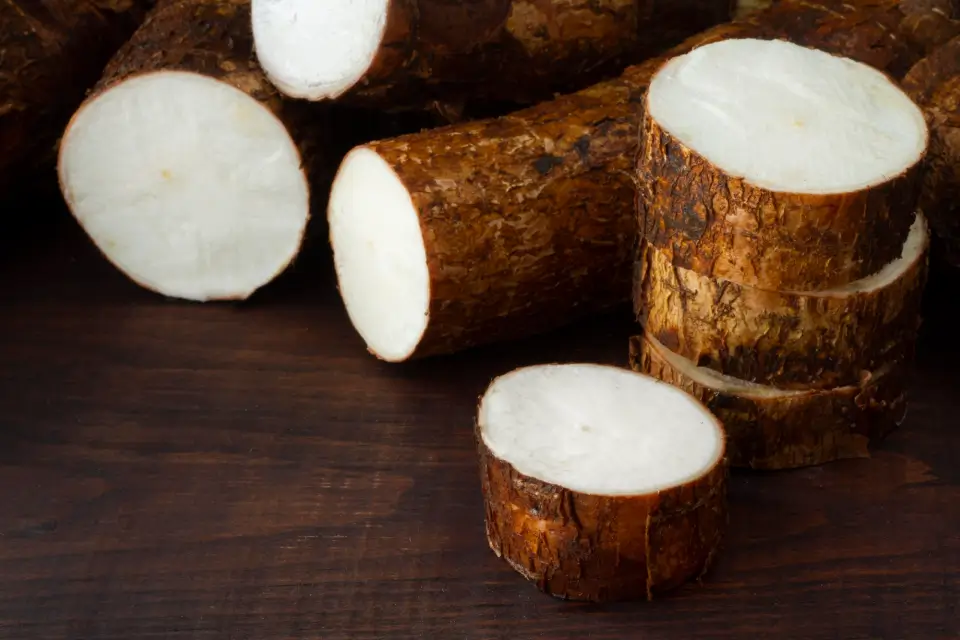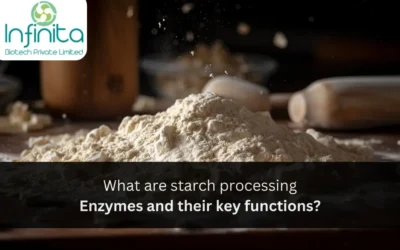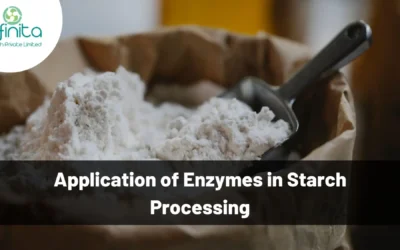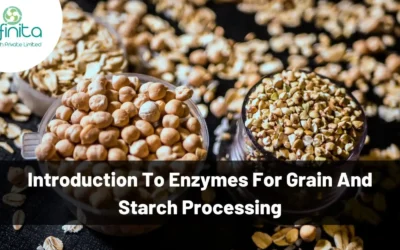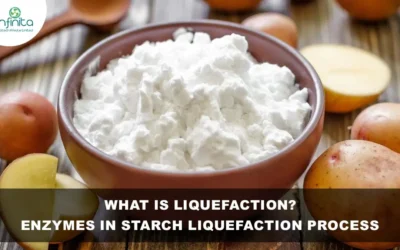Importance Of Enzymes In Starch Processing
Starch also known as amylum is a polymeric carbohydrate comprising of various glucose units linked by glycosidic bonds. This polysaccharide is created by most green plants as storage of energy. It is the most widely recognized starch in the human diet and is contained in enormous sums in staple nourishments like potatoes, wheat, maize (corn), rice, and cassava. Unadulterated starch is a white, bland and unscented powder that is insoluble in cool water or alcohol. It comprises of two kinds of molecules: the straight and helical amylose and the branched amylopectin. Contingent upon the plant, starch usually contains 20 to 25% amylose and 75 to 80% amylopectin by weight. In industrial processes, starch is changed over into sugars, for instance by malting, and fermented to create ethanol in the manufacturing of beer, whisky and biofuel. It is refined to create a considerable amount of the sugars utilized in processed food. Blending most starches in warm water delivers a glue, for example, wheatpaste, which can be utilized as a thickening, hardening or sticking agent. The greatest industrial non-food utilization of starch is as a glue in the papermaking procedure. Starch can be applied to parts of certain clothes before pressing, to solidify them.
How Is Starch Made?
Plants make starch by changing over glucose 1-phosphate to ADP-glucose utilizing the catalyst glucose-1-phosphate adenylyltransferase. This progression requires energy as ATP. The enzyme starch synthase then includes the ADP-glucose by means of a 1,4-alpha glycosidic bond to a developing chain of glucose remnants, freeing ADP and making amylose. The ADP-glucose is in all likelihood added to the non-diminishing end of the amylose polymer, as the UDP-glucose is added to the non-decreasing end of glycogen during glycogen production. Starch branching protein presents 1,6-alpha glycosidic bonds between the amylose chains, making the branched amylopectin. The starch debranching enzyme isoamylase expels a portion of these branches. A few isoforms of these enzymes exist, prompting a profoundly intricate production process.
Notwithstanding starch combination in plants, starch can be produced from non-food starch intervened by an enzyme cocktail. In this sans cell biosystem, beta-1,4-glycosidic bond connected cellulose is somewhat hydrolyzed to cellobiose. Cellobiose phosphorylase cleaves to glucose 1-phosphate and glucose; the other enzyme—potato alpha-glucan phosphorylase can include a glucose unit from glucose 1-phosphorylase to the non-decreasing ends of the starch. In it, phosphate is internally reused. The other item, glucose, can be absorbed by a yeast. This without cell bioprocessing needn’t bother with any exorbitant chemical and energy input can be conducted in an aqueous solution, and doesn’t have losses of sugar.
What Enzymes Are Used To Make Starch?
The commercial procedure of changing of starch to mono-and oligosaccharides relies upon the accessibility of three significant enzymes — glucoamylase, alpha-amylase and pullulanase. Every one of these compounds has an extraordinary pH and temperature ideal for use, thus unit operations of a starch plant mirror the differing working conditions for every individual enzymatic step. It is important to hydrolyse starch in a wide assortment of procedures which can be consolidated into two fundamental classes:
- procedures in which the starch hydrolysate is to be utilized by microbes or man
- procedures in which it is important to dispose of starch.
In the previous procedures, for example, glucose syrup creation, starch is normally the significant part of reaction mixtures, while in the latter procedures, for example, the refining of sugar cane juice, limited quantities of starch which debase non-starchy materials are expelled. Enzymes of different kinds are utilized in these procedures. In spite of the fact that starches from differing plants might be used, corn is the world’s most rich source and gives the majority of the substrate utilized in the preparation of starch hydrolysates. There are three phases in the transformation of starch:
- Gelatinisation: including the disintegration of the nanogram-sized starch granules to make a viscous suspension.
- Liquefaction: including the halfway hydrolysis of the starch, with the corresponding loss in thickness.
- Saccharification: including the creation of glucose and maltose by further hydrolysis.
How Do The Enzymes In The Starch Help In The Processing Of Starch?
Gelatinisation is accomplished by warming starch with water and happens essentially and normally when starchy foods are cooked. Gelatinised starch is promptly liquefied by incomplete hydrolysis with enzymes or acids and saccharified by further acidic or enzymic hydrolysis. The alpha-amylases (1,4-a-D-glucan glucanohydrolases) are endohydrolases which separate 1,4-a-D-glucosidic bonds and can sidestep however can’t hydrolyse 1,6-a-D-glucosidic branch points. Commercial biocatalysts utilized for the industrial hydrolysis of starch are created by Bacillus amyloliquefaciens (provided by different producers) and by B. licheniformis. They vary basically in their resilience of high temperatures, Termamyl being able to retain greater activity at up to 110°C, in the presence of starch, than the B. amyloliquefaciens alpha-amylase. DE estimations of 8-12 are utilized in most commercial procedures where further saccharification is to happen. The primary prerequisite for liquefaction to this degree is to diminish the consistency of the gelatinised starch to ease consequent processing.
Granular starch is slurried at 30-40% (w/w) with cold water, at pH 6.0-6.5, comprising 20-80 ppm Ca2+ (which balances out and actuates the enzyme) and the catalyst is included (by means of a metering siphon). The alpha-amylase is typically provided at high activities so the protein portion is 0.5-0.6 kg ton-1 (around 1500 U kg-1 dry matter) of starch. When Termamyl is utilized, the slurry of the starch in addition to protein is siphoned ceaselessly through a jet cooker, which is warmed to 105°C utilizing live steam. Gelatinisation happens quickly and the enzymic action joined with the critical shear forces, starts the hydrolysis. The residence time in the jet cooker is short. The somewhat gelatinised starch is passed into a series of holding tubes kept up at 100-105°C and held for 5 min to finish the gelatinisation procedure. Hydrolysis to the necessary DE is finished in holding tanks at 90-100°C for 1 to 2 h. These tanks contain baffles to dishearten back mixing. Comparable procedures might be utilized with B. amyloliquefaciens alpha-amylase yet the most extreme temperature of 95°C must not be surpassed. This has the downside that the last ‘cooking’ stage must be presented when the necessary DE has been achieved so as to gelatinise the recalcitrant starch grains present in certain kinds of starch which would somehow cause cloudiness in solutions of the finished product.
Alpha-amylase derived from fungus likewise can be used in the baking industry. It regularly should be added to bread-producing flours to advance satisfactory gas creation and starch modification during fermentation. This has gotten important since the invention of combine harvesters. They decrease the time between cutting and sifting of the wheat, which recently was adequate to permit constrained sprouting so expanding the measures of endogenous enzymes. The fungal enzymes are utilized as opposed to those from bacteria as their activity is simpler to control because of their relative heat lability, denaturing quickly during heating.
Glucoamylase derived from A. niger is used to cleave the alpha-1,4 and 1,6 linkages from the non-reducing ends. This produces beta-glucose. The significant utilization of glucoamylase is the saccharification of partially processed starch/dextrin to glucose, which is a basic substrate for various fermentation procedures and a variety of food and beverages ventures. Glucoamylase for industrial applications has customarily been delivered utilizing filamentous fungi, albeit an assorted gathering of microorganisms is accounted for to create glucoamylase since they emit enormous amounts of the compound extracellularly. The monetarily utilized fungal glucoamylases have certain confinements, for example, moderate thermostability, acidic pH necessity, and slow catalytic activity that increments the procedure cost.
Pullulanase sourced from B. acidopullululyticus cleaves only alpha-1,6 linkages to give straight chain maltodextrins. The utilization of pullulanase (EC 3.2.1.41) has as of late been the subject of expanded applications in starch-based enterprises particularly those focused on glucose creation. Pullulanase, a significant debranching catalyst, has been generally used to hydrolyse the α-1,6 glucosidic linkages in starch, amylopectin, pullulan, and related oligosaccharides, which enables a total and effective transformation of the branched polysaccharides into little fermentable sugars during saccharification process. The modern assembling of glucose includes two progressive enzymatic steps: liquefaction, conducted after gelatinisation by the activity of α-amylase; saccharification, which brings about a further change of maltodextrins into glucose. During the saccharification process, pullulanase has been utilized to increase the last glucose concentration with a decreased measure of glucoamylase. Subsequently, the reverse reaction that includes resynthesis of saccharides from glucose particles is forestalled.
In conclusion, starch is a very important material in the industry and its hydrolysis is a significant step in the production of many different products like paper, glue, baked goods and proccessed sugars. It is found in many organic substances like corn and potatoes but can also be made chemically. Enzymes specifically glucoamylase, alpha-amylase and pullulanase are important in the hydrolysis of starch.
